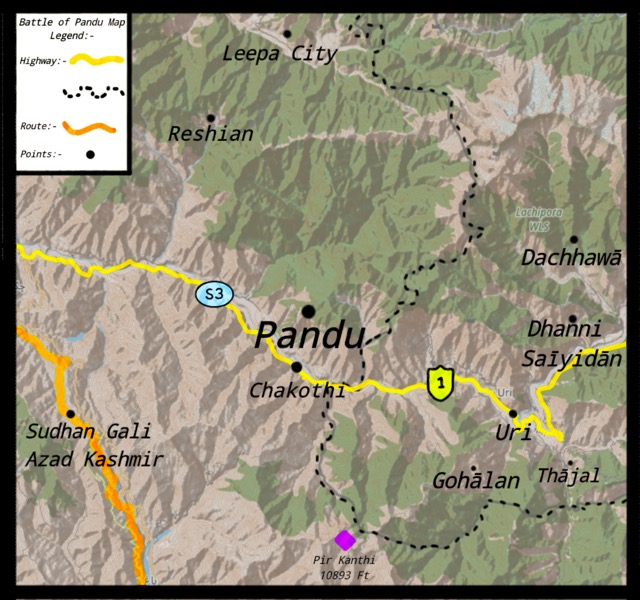A Brewing Storm in South Asia
South Asia is once again on the edge of chaos. The warning from Pakistan about an imminent Indian incursion into Kashmir has reignited global fears of a full-blown war between two nuclear-armed neighbors. Kashmir has long been a powder keg, and every spark—real or perceived—can quickly spiral into an uncontrollable inferno. Tensions have been mounting for weeks, but this stern warning marks a critical escalation. The world watches with bated breath as the possibility of conflict looms large, threatening not just regional but global peace.
The Kashmir conflict isn’t just about territorial disputes. It embodies historical grievances, national pride, religious divides, and deep-seated mistrust. The warning signals that diplomatic measures are failing, and the situation is spiraling toward a dangerous confrontation. As events unfold rapidly, understanding the complex history and current dynamics becomes essential to grasp the full gravity of the crisis.
The Kashmir Dispute: A Century-Old Flashpoint
The Kashmir dispute traces its roots back to the Partition of British India in 1947, a chaotic and bloody event that led to the birth of two nations: India and Pakistan. The princely state of Jammu and Kashmir, with its Muslim-majority population but a Hindu ruler, became the bone of contention. The Maharaja’s decision to accede to India sparked the first Indo-Pak war and laid the foundation for decades of hostility.
Over the years, Kashmir has seen insurgencies, heavy militarization, political crackdowns, and countless civilian casualties. It remains one of the most heavily militarized zones on Earth, with both India and Pakistan claiming it in full but controlling only parts. Multiple UN resolutions, bilateral talks, and international mediation efforts have failed to resolve the issue.
Each flare-up in Kashmir risks igniting a larger war, given the nationalist sentiments tied to the region in both countries. Both nations have fought three wars—two of them directly over Kashmir—and today’s tensions remind many of the lead-up to those devastating conflicts.
Recent Developments Leading to the New Crisis
Several recent events have contributed to the latest escalation. Internally, India revoked Jammu and Kashmir’s special autonomous status in August 2019, a move that Pakistan strongly opposed and termed as illegal. The change in status escalated tensions significantly, leading to a diplomatic freeze between the two nations.
Meanwhile, cross-border skirmishes along the Line of Control (LoC) have become almost routine. Civilian casualties have risen, and allegations of ceasefire violations by both sides are frequent. Furthermore, political developments within both countries have played a role. In India, the current government’s nationalist rhetoric has kept Kashmir a hot-button issue. In Pakistan, economic and political pressures have heightened the need to rally domestic support through the Kashmir cause.
The latest Pakistani warning points to specific intelligence indicating Indian military plans for a limited incursion. Whether real or exaggerated, the fact that the warning was made public elevates the risk of miscalculation and rapid escalation.
Pakistan’s Warning: What Was Said and Why It Matters
Pakistan’s Foreign Minister and military officials have issued direct warnings, stating that they possess credible intelligence suggesting India is planning a military incursion. They have vowed a “strong and immediate” response to any Indian aggression.
The gravity of these statements cannot be overstated. They essentially set red lines, making any Indian military activity in Kashmir a potential trigger for a larger conflict. Pakistan’s military has been placed on high alert, and diplomatic channels have been activated to raise global awareness.
This public warning strategy serves multiple purposes. Domestically, it galvanizes public support around national security. Internationally, it preemptively shifts the blame onto India for any future escalation. It also signals to India that Pakistan is prepared for military confrontation, raising the stakes considerably.
The timing is also crucial, coming at a point when both nations are politically vulnerable internally, making external conflict an all-too-tempting distraction.
India’s Position: Silence or Strategic Patience?
India has largely refrained from responding directly to Pakistan’s warnings, at least in public forums. However, reports suggest that military activity and preparedness on the Indian side of the border have been ramped up significantly. This silence could be a deliberate strategy—a form of strategic patience aimed at avoiding giving Pakistan a diplomatic victory by escalating tensions openly.
The Indian government’s stance seems to rest on portraying Pakistan as an international provocateur while maintaining a defensive posture publicly. However, nationalist media narratives within India have been hawkish, calling for firm action against any cross-border provocations.
Behind the scenes, India’s military planners are undoubtedly assessing options. While no country seeks full-scale war, the risk of localized skirmishes morphing into broader conflict remains dangerously high. With public sentiment in both countries heavily charged, leaders have limited political room for de-escalation.
India’s restraint—or perceived restraint—should not be mistaken for weakness. Both countries know that even a limited conflict could have devastating consequences, especially under the shadow of nuclear weapons.



